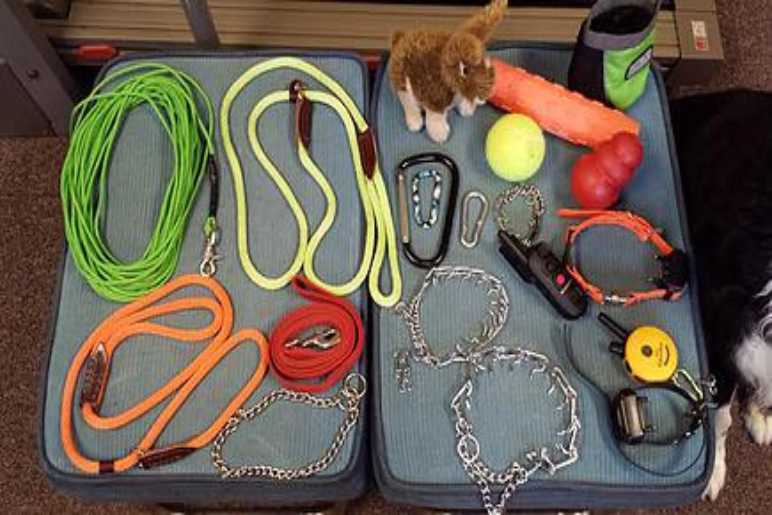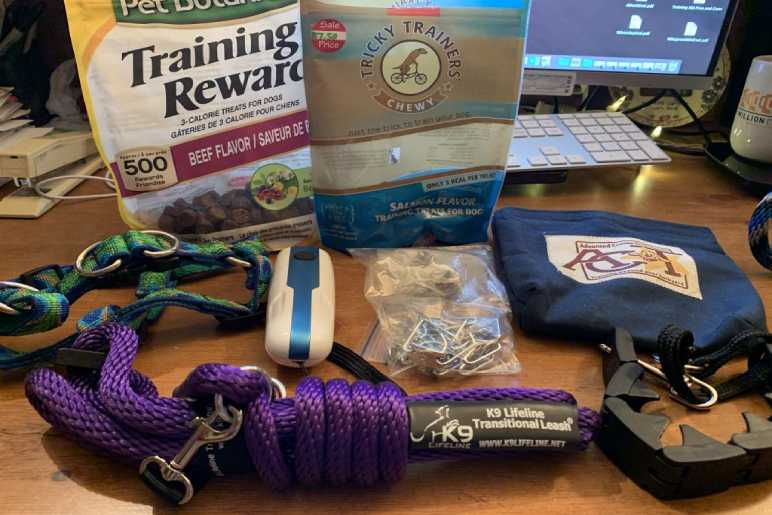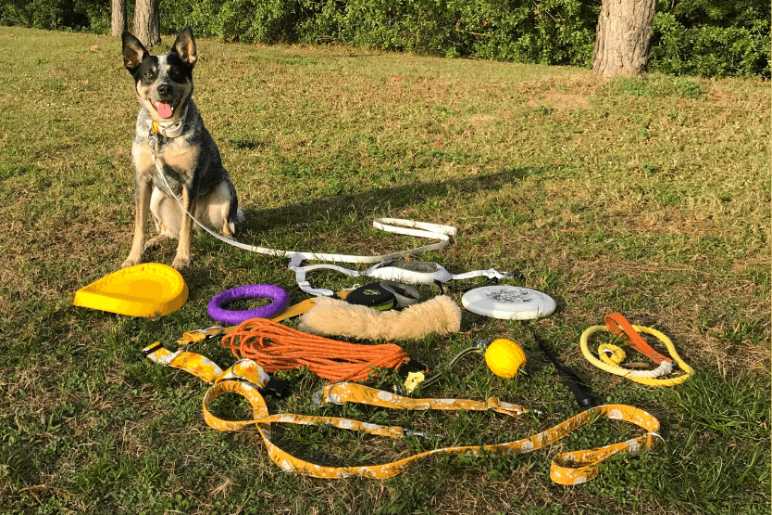Training a dog can be a fulfilling journey, but it’s not without its challenges. The good news is that with the right dog training accessories, you can make the process easier, more efficient, and enjoyable for both you and your canine companion. Whether you are a new dog owner or a seasoned trainer, using the appropriate tools is crucial in shaping your dog’s behavior and helping them become a well-mannered pet. In this blog, we’ll explore the essential dog training accessories that can significantly improve your training sessions.
1. Training Leashes: Control and Guidance

A training leash is one of the most fundamental dog training accessories. It provides you with control over your dog during training sessions, making it easier to guide and correct their behavior. There are different types of leashes designed for specific training purposes:
- Standard Leash: A six-foot leash is ideal for daily walks and basic training. It provides enough length for freedom while still maintaining control.
- Long Line Leash: A 15 to 30-foot leash is used for recall training, allowing your dog to explore a larger area while you still have control.
- Hands-Free Leash: Perfect for active dog owners, this leash wraps around your waist, allowing you to walk, jog, or run with your dog while keeping your hands free.
Leashes made from durable materials such as nylon or leather are ideal for long-lasting use.
2. Clicker: Positive Reinforcement Tool

A clicker is a small handheld device that makes a clicking sound when pressed. This simple tool is a powerful accessory for positive reinforcement training. The idea behind clicker training is to associate the clicking sound with a reward, usually a treat or verbal praise.
Clicker training is effective because it allows for precise timing. The click tells your dog exactly which behavior earned them a reward, making it easier for them to understand and repeat the desired actions.
3. Training Collars: Effective Behavioral Control

Training collars are another essential dog training accessory that can help address various behavioral issues. Different collars serve different purposes, and it’s important to choose one that aligns with your training goals and your dog’s temperament:
- Flat Collar: A basic collar that is ideal for everyday use. It’s comfortable for the dog and can be used for identification and leash attachment.
- Martingale Collar: Designed for dogs with narrow heads (such as Greyhounds), this collar tightens when the dog pulls but doesn’t choke, offering more control.
- Prong Collar: This collar applies pressure around the dog’s neck when they pull on the leash. It’s often used for larger dogs or those that are difficult to control. However, it should be used under the guidance of a professional trainer to avoid misuse.
- Shock Collar: Often referred to as an e-collar, this device delivers a mild electric stimulation to the dog when they exhibit undesirable behavior. It’s used for off-leash training and to prevent problematic behaviors, but like the prong collar, it should be used responsibly.
4. Treat Pouch: Keep Rewards Handy
Training sessions often involve rewarding your dog with treats to reinforce good behavior. A treat pouch is a simple yet essential accessory for keeping those treats easily accessible.
A good treat pouch should be:
- Easy to open and close
- Large enough to hold a good quantity of treats
- Made from washable or easy-to-clean materials
Wearing a treat pouch means you can keep your hands free and ready to signal or guide your dog during training.
5. Training Crate: Creating a Safe Space
Crates are often misunderstood as a form of punishment, but in reality, they can be one of the most useful training tools when used correctly. Crate training helps with housebreaking, managing behavior when you’re not home, and providing your dog with a safe, comfortable space to retreat.
When selecting a crate, make sure it’s large enough for your dog to stand, turn around, and lie down comfortably. Over time, the crate becomes a den-like space that your dog will naturally gravitate towards for relaxation.
6. Dog Whistle: Long-Distance Communication
A dog whistle is a great tool for training commands at a distance, particularly in outdoor environments where your voice may not carry far enough. Unlike verbal commands, the high-pitched sound of a whistle is consistent and can be heard by dogs over long distances.
Whistles are commonly used for recall training, teaching your dog to return to you when they hear the sound, even if they’re far away or distracted.
7. Agility Equipment: Building Confidence and Focus
If you’re interested in dog sports or simply want to keep your dog mentally and physically stimulated, agility equipment can be a great addition to your training routine. Agility training helps improve your dog’s coordination, confidence, and focus, making it an excellent way to bond with your dog while keeping them active.
Some common agility equipment includes:
- Tunnels: Encourage your dog to run through a tunnel, building speed and focus.
- Weave Poles: Teach your dog to navigate between poles, improving their coordination.
- Jumps: Help your dog practice jumping over hurdles, improving strength and agility.
8. Training Muzzles: Ensuring Safety
While muzzles are often associated with aggressive behavior, they can be helpful training tools in specific situations. Muzzles ensure safety when working with dogs that are prone to biting or reactive behavior, especially in high-stress environments.
It’s important to introduce your dog to a muzzle slowly and positively, using treats and praise to build a positive association.
9. Target Stick: Precision Training
A target stick is a useful accessory for precision training. It’s a stick with a rounded end that you teach your dog to touch with their nose. The target stick can be used to guide your dog into specific positions or to perform tricks, making it a fun and engaging way to train.
By teaching your dog to follow the target stick, you can guide them to sit, lie down, or even walk to a specific location.
10. Behavior Monitoring Devices: Track Progress
In recent years, technology has made its way into the dog training world in the form of behavior monitoring devices. These accessories help track your dog’s activity, sleep patterns, and even stress levels. Devices like the Whistle Go Explore or FitBark can give you insights into your dog’s well-being, allowing you to tailor training sessions to their needs.
Conclusion: Choosing the Right Dog Training Accessories
With the right dog training accessories, training your dog becomes a much more manageable and enjoyable experience. Whether you’re working on basic commands, addressing behavioral issues, or even venturing into agility training, having the appropriate tools can make all the difference.
Remember, patience and consistency are key to successful dog training. And if you’re unsure about which tools are right for your dog, consulting a professional trainer like Daniel Garrigan can provide expert guidance tailored to your dog’s specific needs.
Have A Look :-
